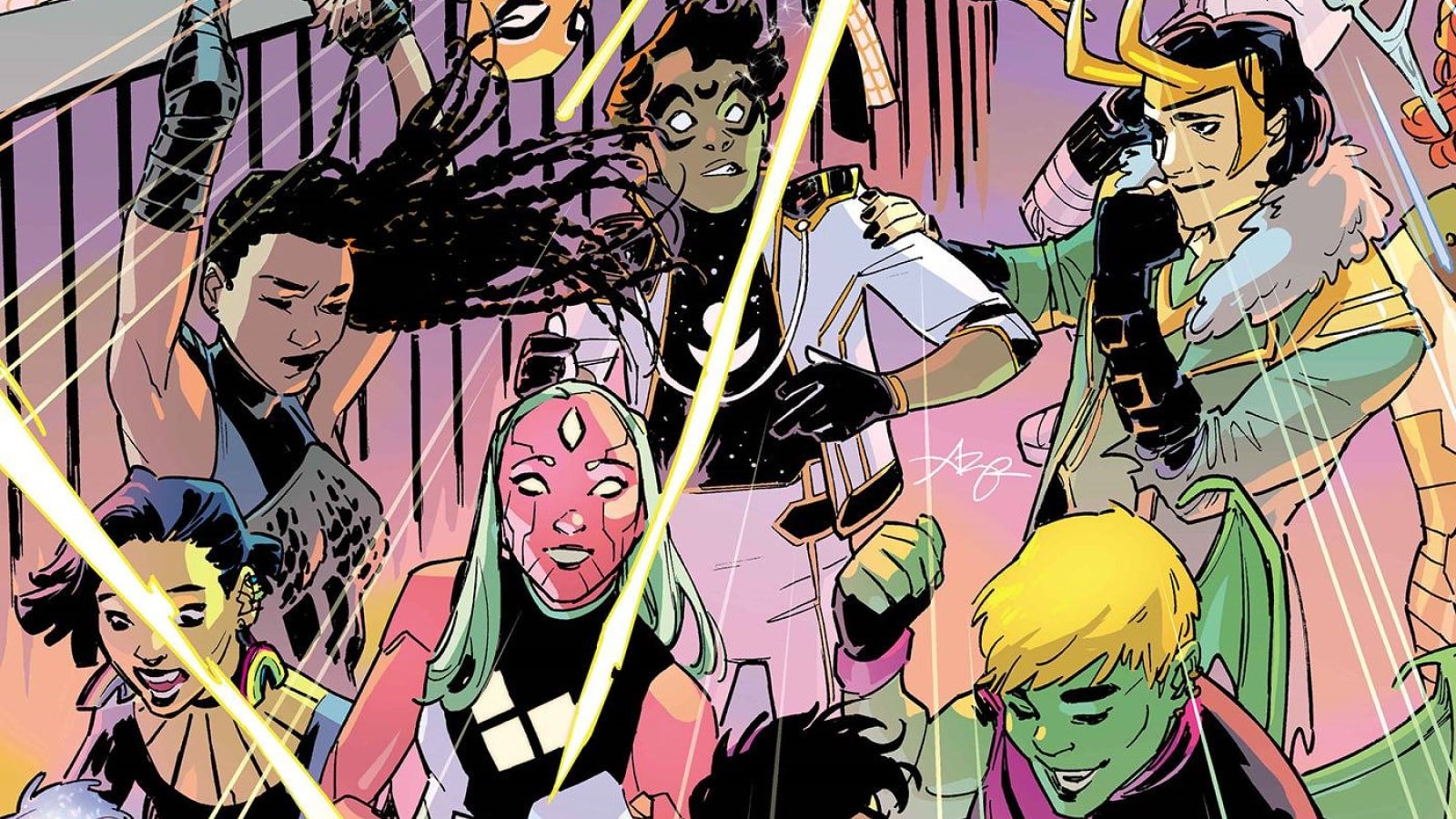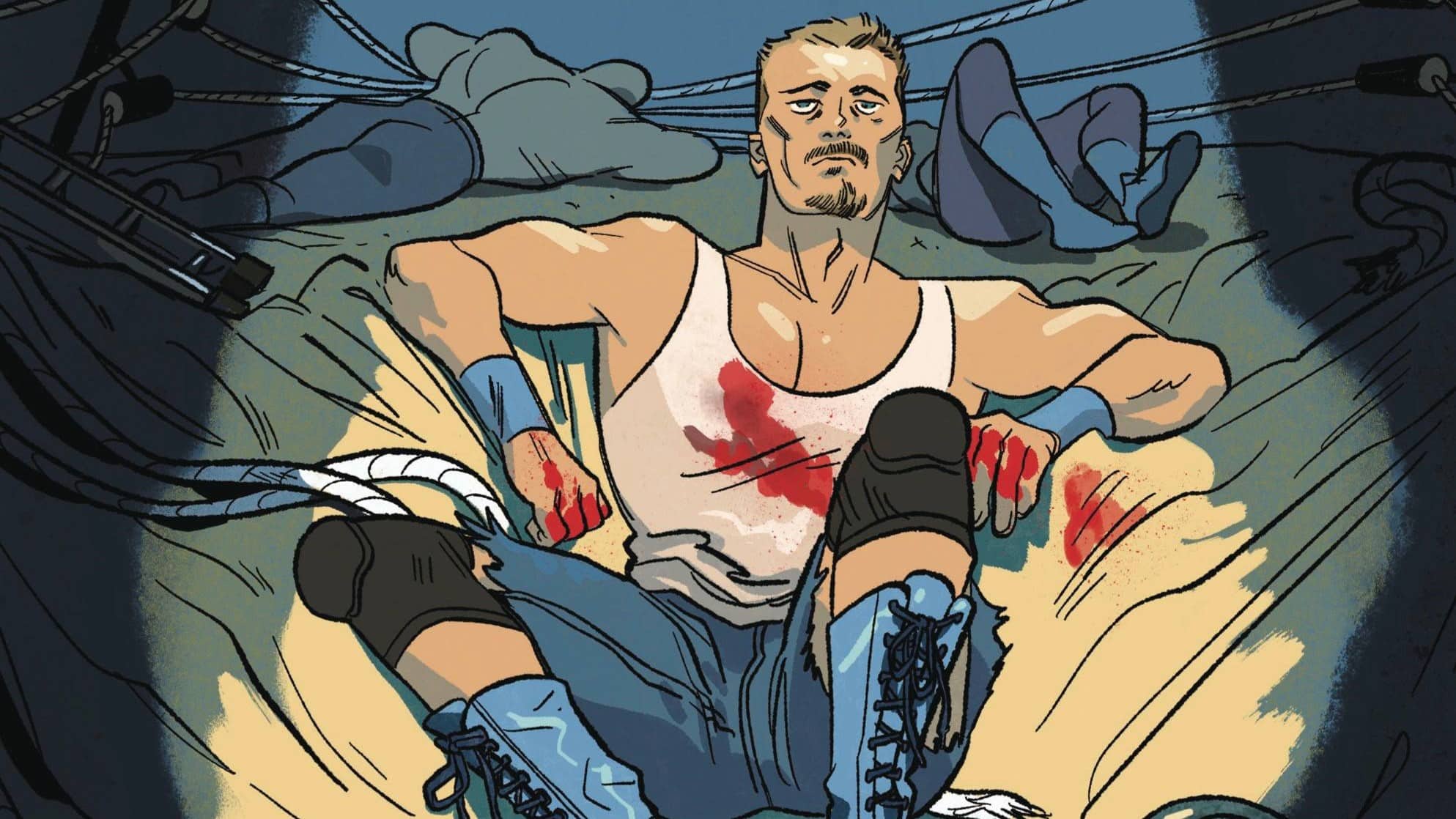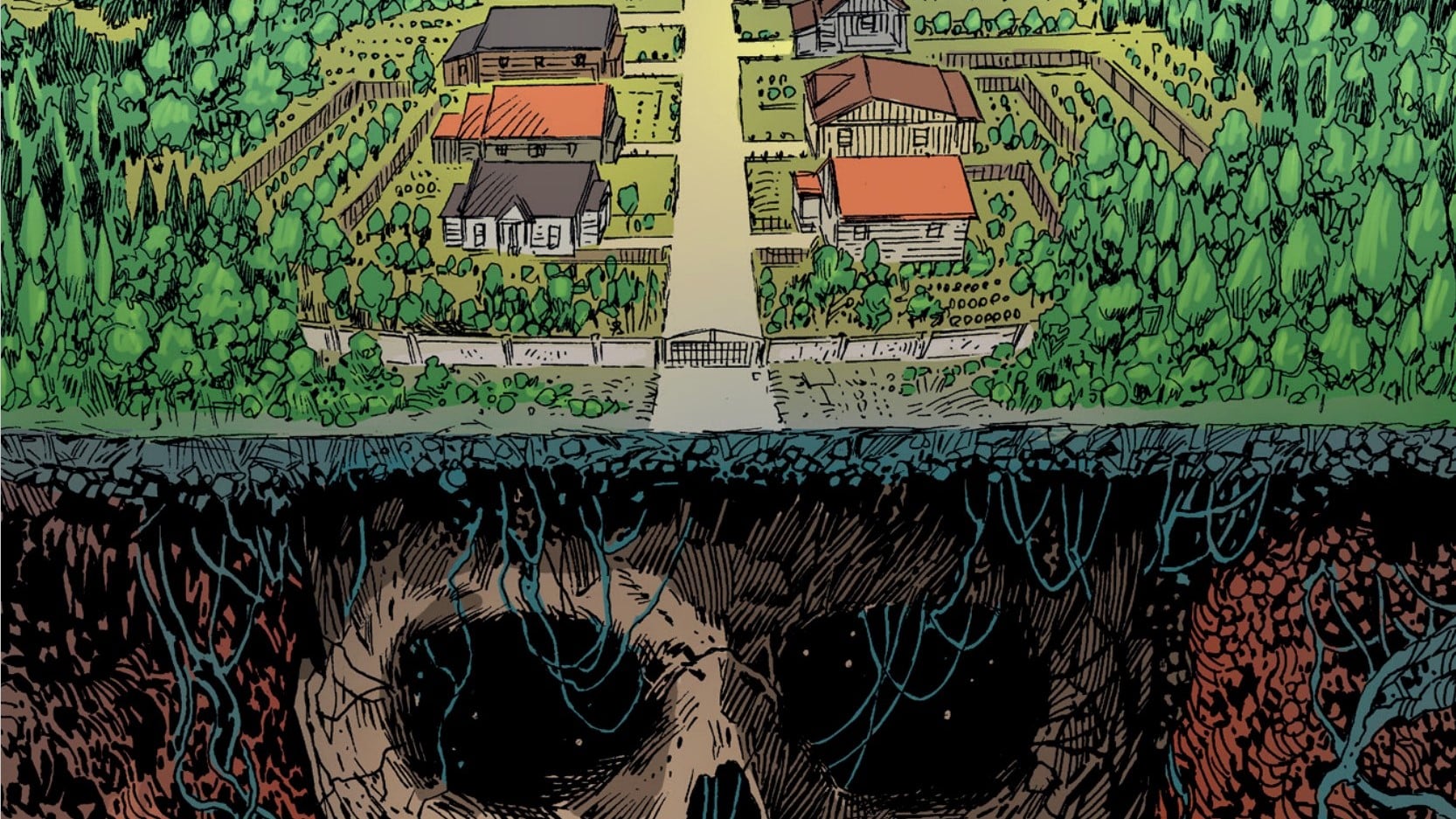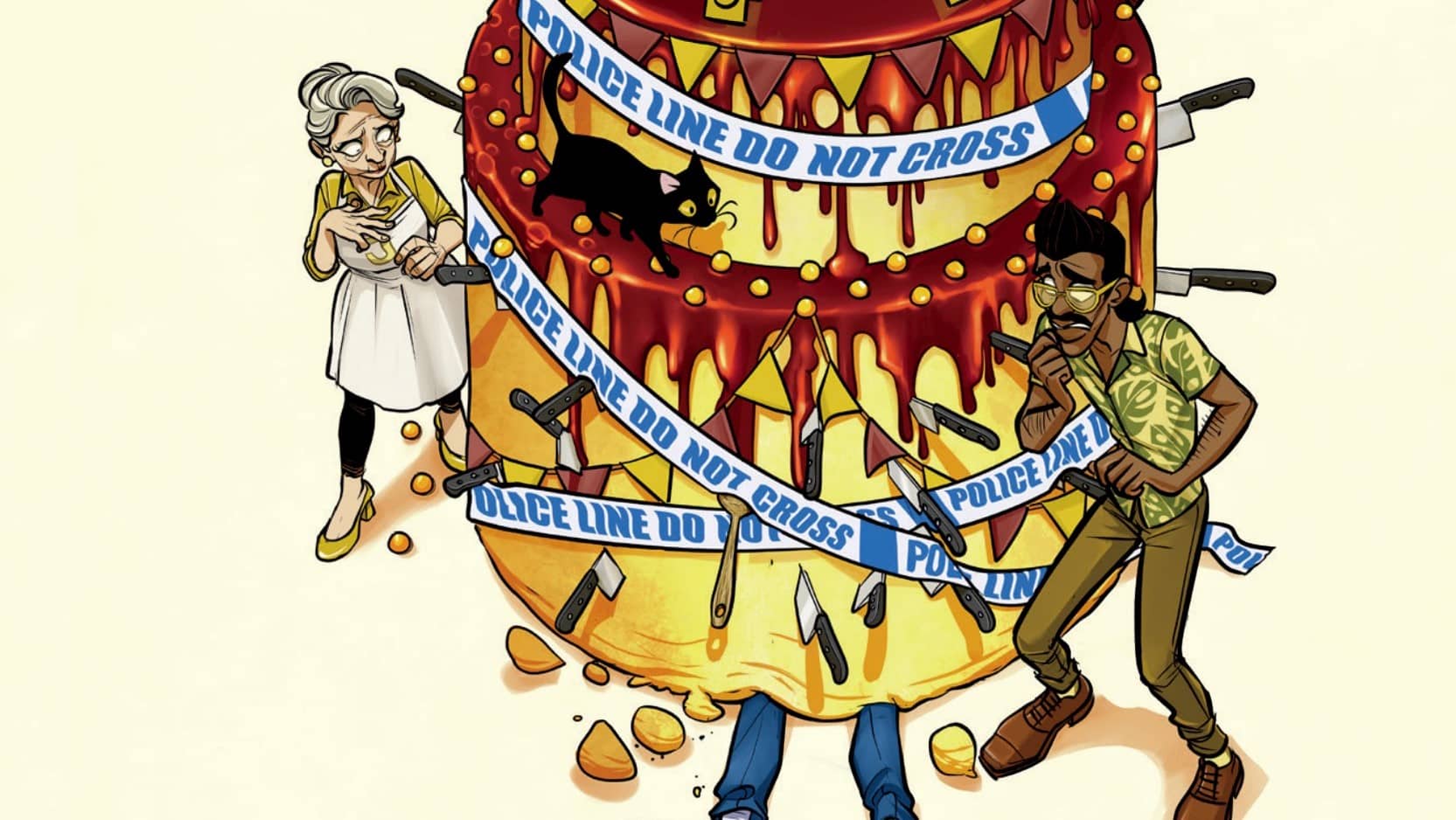It’s time to face your parent issues, save the environment and go on a top-secret mission as Dan Grote reviews AHOY’s Penultiman #1 and Zack Jenkins reviews Vault’s No One’s Rose #5 and AWA’s American Ronin #1.
Penultiman #1
Writer: Tom Peyer, Artist: Alan Robinson, Colorist: Lee Loughridge, Letterer: Rob Steen, Publisher: AHOY

Penultiman is hard to write about … because it keeps autocorrecting to Penultimate. Feel free to blurb that on the trade.
This is the third AHOY Comics series that uses an ur-type superhero analog to satirically examine the human condition, after The Wrong Earth/Dragonfly & Dragonflyman and the DC refugee book Second Coming, both of which were very good. One even inspired a holiday. Second Coming and Penultiman both play with versions of Superman (a tradition as old as Captain Marvel — the Shazam one, not any of the Marvel ones).
But where Second Coming’s Supes analog serves as a buddy cop and in contrast to Jesus Christ as an examination of literary messianic figures, Penultiman is an examination of how even the most powerful and exceptional among us can be laid low by insecurity and self-doubt, and turn those negative emotions on others.
Penultiman is just as his name suggests, the next-to-last stage in human evolution. He was banished to our time from the year 90,019 by a civilization that believes it has reached the peak of human evolution but honestly just looks like a bunch of diminutive, crooked-faced, hamfisted Coneheads. Regardless, while Penultiman is regarded in the present as a hero with near-godlike powers, he feels constant shame about not being accepted by the people of his time. And he channels that shame into lashing out at his android servant, Antepenultiman (Is there an etymologist in the house?), who serves at once as sidekick, butler and therapist to his ungrateful organic master.
The story was previously introduced in 2019’s Steel Cage anthology, which was supposed to determine by reader vote which of three stories would go to series but then it turned out all three would. Allegedly. Maybe COVID-19 messed all that up.
Either way, you can read that story for free on comiXology.
Issue #1 reestablishes the premise as introduced in the Steel Cage short but introduces Antepenultiman and Penultiman’s nemesis, Zev Zolo, a generic, Silver Age-y-type mad scientist villain.
Broad strokes like Zev Zolo and the “All-Star”-like intro that let us know what we’re dealing with allow the book to focus on the meat of the matter: Penultiman’s parent issues. He is everyone of us who ever pined for the love of a parent or a partner who wouldn’t return it; everyone of us who believes, “If only we we were better” or changed this thing about us, they’d take us back; and everyone of us who, when gifted with a partner or friend who earnestly wants to get us past those destructive feelings, lashes out at that person, insisting they don’t understand when they understand all too well.
Except, when you can fly and have super strength and a whole bunch of other nonsense powers, the hurt you give hurts even more.
That’s deep stuff, though I’d argue the comic itself won’t have you texting your therapist because you’ve had a breakthrough. It’s still a light, humorous book – Tom Peyer’s stock-in-trade – though it certainly doesn’t mock our hero’s feelings. Alan Robinson draws Penultiman as he goes through the entire emotional spectrum, from triumph to tears to cathartic rage. You will believe an all-powerful white boy can cry.
I’ll be back for the second issue.
No One’s Rose #5
Writers: Zac Thompson and Emily Horn; Artist: Alberto Alburquerque; Colorist: Raul Angulo; Letterer: Hassan Otsmane-Elhaou; Publisher: Vault

In many ways, No One’s Rose is an incredible distillation of the comics market outside of the Big Two. It’s a fascinating, fleshed out sci-fi world with diverse and interesting characters furthering a bold high concept. It’s a natural extension of writers Zac Thompson and Emily Horn’s worldview and an act of defiance against their fears. It has absolutely jaw-dropping designs and storytelling from artist Alberto Alburquerque and colorist Raúl Angulo. It’s an expression of freedom you just can’t get in corporate-owned superhero comics.
It isn’t all sunshine and roses. The deep pockets of Disney and AT&T mean marketing dollars, built-in audiences and more guarantees than Vault Comics’ Wassel brothers can provide. Those limits mean so many comics get 100 pages to introduce a world before closing the book forever. There is so much to do before saying goodbye that endings can feel like missed opportunities.
No One’s Rose #5 is an ending for Tenn and the Green Zone and everything we’ve experienced over the last few months. It has a lot of pieces to move in a small page count, which leaves it overstuffed. There are moments, moments the series has built everything up to, that lack the impact they deserve because the story has to rush past them to wrap up all the other loose ends. What we get is a clean ending. Questions are answered, catharsis is given, new worlds are opened up, but there’s a feeling of missed opportunity.
It’s one thing for a story to get stretched past where it should, to feel thin and sluggish. It’s another all together for a book to have four excellently paced issues with a sprint to the finish. There’s the knowledge that there could have, should have been more. It leaves you with a bitter taste, with regret and longing for what could have been.
No One’s Rose deserves your attention. It’s a well-crafted book that should honestly make Alburquerque an all-star, put Horn on people’s “to watch” list and raise the profile of Thompson. Its problems come from reaching for too much, being too ambitious. There are years’ worth of stories that could be told in this world — not an easy thing to establish in five issues. Unfortunately, that’s not what Vault can do right now, and so we are left wondering what if.
American Ronin #1
Writer: Peter Milligan, Artist: ACO, Colorist: Dean White, Letterer: Sal Cipriano, Publisher: AWA

American Ronin, on the surface at least, is an interesting idea. Peter Milligan, at one point in his career, was a reliable name in comics. ACO has a reputation for trippy, innovative art from books like Midnighter and Nick Fury. Dean White is a fantastic colorist who is currently killing it on X-Force. So why then does this book feel so stale?
Milligan came to notoriety at the tail end of the “British invasion” of comics. He was a contemporary of Warren Ellis, though his most recognizable work came when he blended those Vertigo sensibilities with superheroes in the cult classic X-Statix. In American Ronin, he tosses away any of those unique ambitions for a boilerplate story about a burnt spy getting revenge on the elites of the world with a seasoning of 15-minutes-in-the-future sci-fi world building. From a storytelling standpoint, it feels like a rejected Ellis pitch. It’s so generic that anything out of the ordinary, like a Tarantino-esque foot fetish scene, adds more confusion to what the book is trying to be.
Even with these plot limitations, one would expect some interesting and vibrant art from ACO. The artist has taken generic stories like this and evolved them into something that’s at least exciting to look at. However, Milligan’s script leaves little room for the bombast ACO is known for. The paneling rarely breaks from a Bryan Hitch-influenced “widescreen comics” design, and there is little of the innovation ACO is known for in other books. Multiplying this problem is White’s earthy, reserved color palette. You hire Dean White, you know what you are going to get; unfortunately, this stands at odds with the neon-infused trip that both the cover and ACO’s body of work promise.
In 1954, Akira Kurosawa released his classic film Seven Samurai, about a group of ronin hired to protect a small town. In 1960, the film was adapted by Western director John Sturges as The Magnificent Seven. Much like every other aspect of this book, the title American Ronin was done much better a long time ago.







